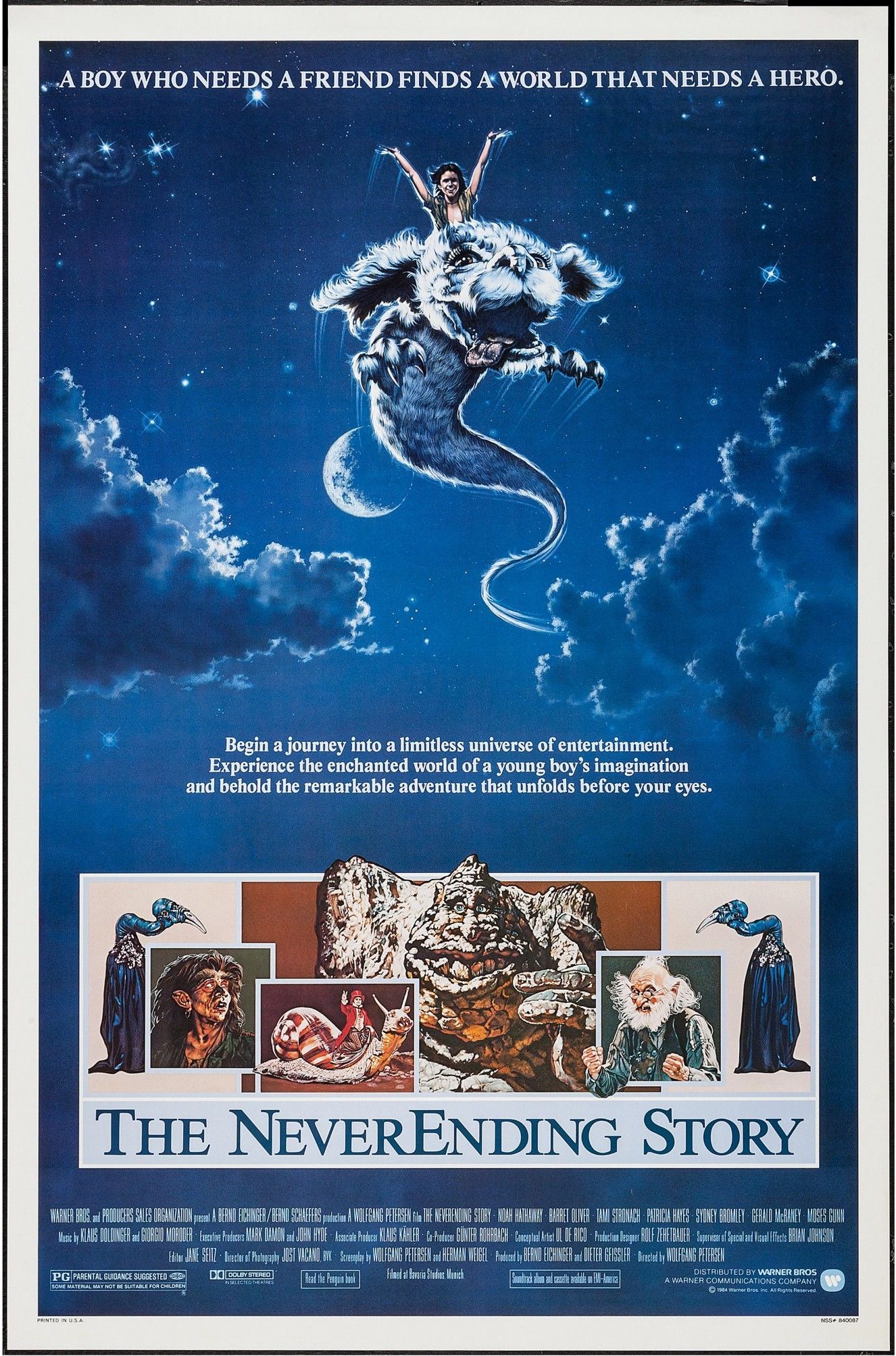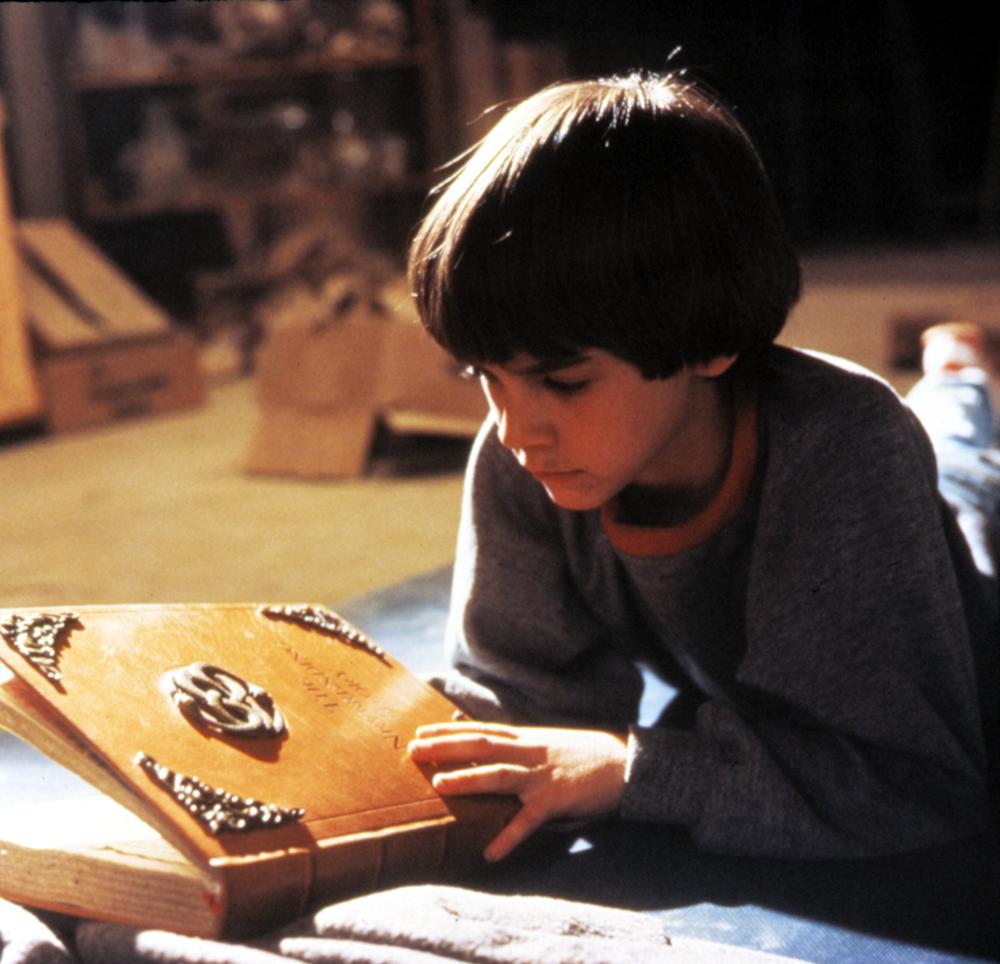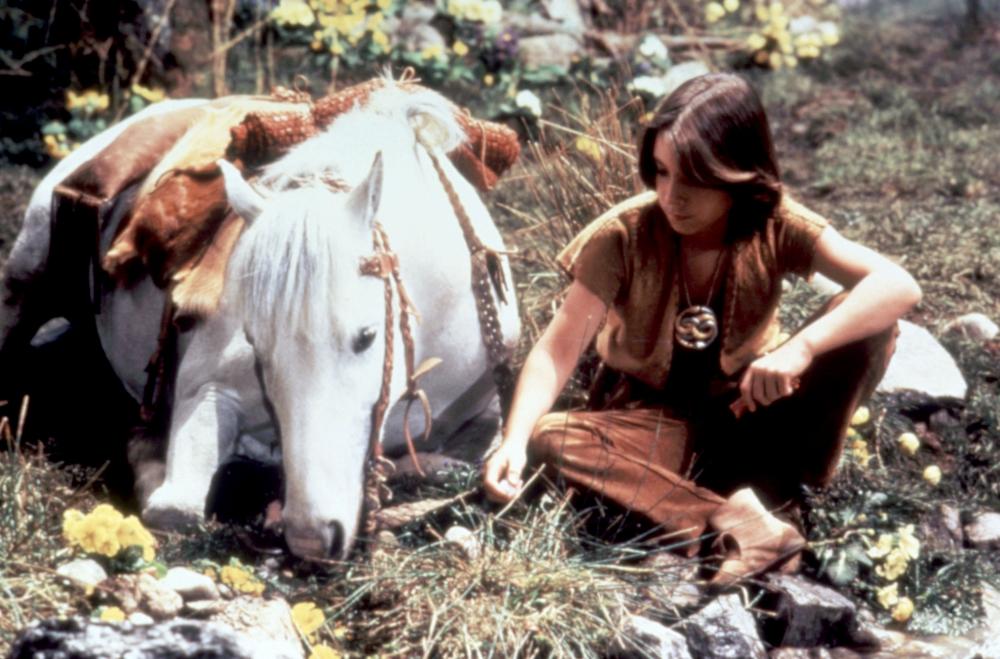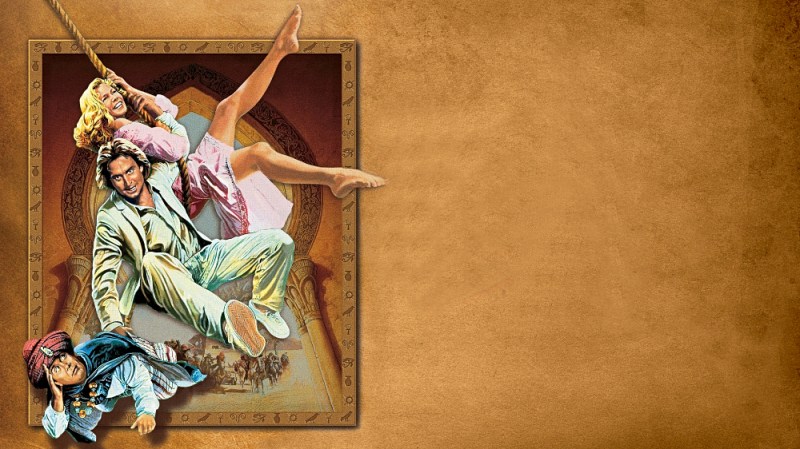
The Movie Lionel Hutz sued for false advertising. Is there any bigger compliment?
In 1984, Wolfgang Peterson would make The Neverending Story, his first full-length English language feature after the censor baiting shenanigans of his early years as a European auteur and the release of seminal, claustrophobic U-Boat movie Das Boot, which was nominated for 6 Oscars and lauded as a classic when released in 1982. The Neverending Story was filmed primarily in Germany at Bavaria Studios in Munich, with Warner Bros. taking on American distribution duties for the slightly shorter edit released in the USA, and was based on the first half of a children’s fantasy novel by Michael Ende called Die Unendliche Geschichte, released in 1979 to staggering acclaim. Ende, who was initially in favour of the adaptation, would quickly lose faith in the production and requested the title be changed, since the resulting film was thematically and aesthetically at odds with his work. He would go on record denouncing the film as ‘revolting’. He considered it a consumerist frivolity more concerned with making money than telling his story and would eventually file a lawsuit against the filmmakers, though was unsuccessful in court, in spite of his protestations.
The film would split the board critically upon release in the media too, with Vincent Canby of the New York Times declaring it ‘a graceless, humourless fantasy for children.’ Seminal cineaste Roger Ebert, meanwhile, was more enthusiastic. Ultimately, critical variability would not affect the film’s box office. Filmgoers flocked to see the confection in their droves, with worldwide grosses somewhere in the vicinity of $100,000,000 against an estimated budget of $27,000,000, which at the time of the movie’s release confirmed it as the most expensive ever filmed outside the USA.
The American edit of the film starts out in spirited ’80s fashion, trailing the clouds in POV flight mode to the strains of Giorgio Moroder’s classic kitsch-pop novelty tune The Neverending Story. The action then shifts to Bastian Balthazar Bux, a shy and outcast bibliophile ten-year-old played by Barret Oliver in his first major film role. Raised by a widowed and emotionally distanced dad and struggling with his own demons in the wake of his mother’s passing, Bastian gets thrown into dumpsters by bullies, assuming the personality traits of a juvenile doormat and prospective loser in training. Following a brief chase involving the aforementioned bullies, Bastian hides out in an unfeasibly inhospitable antique bookstore, where he encounters a grumpy bookseller, Mr. Coreander, who tries to shoo him despite his pending peril. Bastian asks about one of the books he sees, called “The Neverending Story”, which Coriander appears to be reading. With his curiosity piqued, Bastian seizes the book when Coriander’s back is turned, leaving a note promising to return it, and hides in a school attic to read it overnight.

Once he starts reading the narrative bifurcates, alternating between the washed-out reality of Bastian’s cynical 1980s urban reality (Vancouver doubling as New York by all accounts!) and the colour splash fantasy world of Fantasia, where a great planet-eating blight known simply as The Nothing — which could easily be substituted, if you were feeling metaphysical, for the creeping nihilistic heat death of fantastical storytelling — is devastating the landscape. The only way to stop this is to for the hero of the piece, androgynous purple buffalo hunter and underaged warrior Atreyu, and his trusty steed Artax, of course, to set off on a quest to find the cure for a mystery illness afflicting an unnamed Childlike Empress (Tami Stronach) in the hope that when she awakes The Nothing will be thwarted.
Never give up and good luck will find you.
Falcor
In quintessential fantasy fashion, after receiving The Aureyn a mythical amulet that reputedly grants the bearer wishes and protection, Atreyu gallops off across Fantasia in search of the cure. Discovering en route a medley of oddball creatures/characters including, though not limited to, a giant melancholy turtle and a Luckdragon named Falkor (who for reasons that continue to defy logic reminds me of an end of level boss from seminal ’80s Sega classic Space Harrier), Atreyu is beset by an escalating assortment of challenges that increase his peril and the possibility of failure.
So far so fantasy then…
However, The Neverending Story, for all it’s adherence to campy stereotypes, clunky dialogue and quest-narrative paradigms, and in spite of its status as a blockbuster aspirant, manages to subvert viewer expectations with genuine aplomb. By systematically deviating from the visual and narrative formalities established by its peers and opting for a more philosophical and unconventional take on traditional fantasy formulas, it manages to revise the consistencies of worn-out genre tropes with interesting consequences for the outcome of the story.

How the film achieves this is by using the story within a story device, which allows Bastian Bux, as a real-world protagonist, to assume the narrator role of a second text in which the threatened world of Fantasia is played out as fiction. Eventually the stories converge, culminating in a narrative fusion in the film’s climactic set-piece, where real and imagined actualities collide and enmesh with characters from the storybook, spilling into Bastian’s reality and vice versa. A neat touch comes in Bastian’s usurpation of Atreyu as the hero of the piece. Once it becomes apparent that only a human child can name the ailing empress in order to perpetuate the story, Bastian enters Fantasia to achieve that end. His action bestows upon him the powers of divinity and the ability to redress the story’s tragic ending, in which The Nothing proves successful in wiping fantasy from existence.
Unlike many swords and sorcery and high fantasy movies of the ’80s, The Neverending Story is an oddly alien movie with enough of a feeling of otherness, born of its Germanic origins and enthusiastic reliance on practical effects and puppetry, to qualify as unconventional. Opting to step off the scantily clad barbarian treadmill of early ’80s sword and sorcery classics and cocking a snook at the dwarves/wizards/elves blueprint of many a highbrow fantasy, Peterson’s Fantasia features a delightfully weird array of characters, reputed to have been inspired by the denizens of Lewis Carroll’s mildly surrealistic kids classic Alice in Wonderland.
Responsibilities for the design of the creatures were divvied up between production designer Rolf Zehetbauer, Italian artist Ul De Rico, and Caprice Roth, the professional mime employed to work E.T’s hands in Spielberg classic, E.T. The Extra Terrestrial. The result is an incredibly tactile array of creatures with a feel of immediacy and originality about them. There are moments in the film when they threaten to overpower the narrative through the sheer force of their impressively mounted presence. Still, in spite of this, there’s no doubting that the creatures in The Neverending Story are one of the film’s best assets.

Less impressive is the filmmaker’s depiction of The Nothing, which broadly speaking is a shapeless malevolence of uncertain origin, manifesting as a broiling psychedelic storm for representative purposes onscreen. Lacking corporeality, The Nothing is a hard sell. An over reliance on animatronic deadweight Gmork as its heraldic representative on the ground serves only to diminish its credibility, splitting the focus between the terrible tragedy posed by The Nothing and a mechanically unconvincing red-eyed devil dog. In terms of world building, the film also struggles to cohere. Fantasia never really feels as lived in as it ought, especially for an ancient kingdom purportedly coming apart at the seams. There is a sense that Atreyu’s domain is unfinished in some way, lacking as it does the topographical and environmental uniformity of detail a more weighty fantasy adaptation such as The Fellowship of The Ring would subsequently revel in.
That said, perhaps this unfinished aesthetic was the filmmaker’s intention. After all, the viewer is subject to the world as witnessed through the episodic imaginings of a ten-year-old boy, who is reading the story and filtering his interpretation through a primary coloured lens. A ten-year-old would sketch a world in their imagination, blurring the background details whilst bringing important aspects, such as character and incident, to the fore. Once Bastion becomes a part of the narrative responsible for saving Fantasia and reconstructing the world via his own recollections, it is telling that idealised recollections of Atreyu and Artax populate the landscape as opposed to actual indigenous people’s going about their activities of daily living.
Call my name. Bastian, please! Save us!
The Childlike Empress
Which brings us to the film’s performances. Performances in the film are flimsy at best and overwrought at their worst. Noah Hathaway as Atreyu and Tami Stronach as the Childlike Empress deliver their lines like a couple of talking statues. Barret Oliver as Bastian provides some respite from the earnestness. However, this respite proves scant comfort given he’s a boy in mourning on a sabbatical from reality. It says a lot about the human performances in the movie that when Atreyu’s horse Artax dies in a scene that took two months to film in The Swamps of Sadness due to the difficulties involved in staging it convincingly, the emotional range of the sinking horse is more impactful than that of its human companion.

On top of this the film is almost entirely bereft of female characters and those that do feature are depicted as chaste, old or imperilled. The Childlike Empress — a seemingly ageless entity in the body of a 10-year-old girl — has literally no agency in the story whatsoever, spending most of the film locked in a fairytale coma awaiting a rescuer like an enchanted Snow White clone. The film feels a bit muddled at times and some of its more cosmic elements as it nears its conclusion when Atreyu confronts the reality of The Nothing and experiences an existential crisis that subsequently involves not only Bastian but also the viewing audience as a whole, is more confusing than revelatory, and could have been handled with a bit more assurance.
In spite of its flaws, The Neverending Story remains a well articulated subversion of the fantasy mythos. Surface wise, it may be the story of a magical book, a boy and his horse, a quest to save the universe and an unstoppable evil. However, as the narrative deepens and the plight of Fantasia becomes more acute, it quickly becomes apparent that Peterson’s film is a far stranger and more devious construct. On the one hand it’s a 1980s geek, coming-of-age adventure yarn about overcoming adversity and grief and finding one’s way in a cruel world packed full of cynicism. On the other it is a visually striking reworking of traditional fairy tale tropes that articulates the need for stories and storytelling in a world fast becoming indifferent to their existence.
The Neverending Story was a remarkable success upon release, and would eventually spawn two movie sequels, both of which were rubbish and relegated to ignominy. A TV series titled Tales from the Neverending Story surfaced in the early noughties and vanished just as quickly, while The Never Ending Story: The Animated Adventures of Balthazar Bux aired for a single season between 1995 and 1996, before exiting from the airwaves and quietly expiring. There was also talk of a remake in 2009 when reports indicated that Warner Bros., alongside The Kennedy/Marshall Company and Leonardo DiCaprio’s Appian Way, were looking to adapt the novel for a more modern audience, but talks sputtered out. At time of writing, rumours continue to circulate, though nothing of any substance that would indicate progress.
Director: Wolfgang Petersen
Screenplay: Wolfgang Petersen &
Herman Weigel
Music: Klaus Doldinger &
Giorgio Moroder
Cinematography: Jost Vacano
Editing: Jane Seitz


























